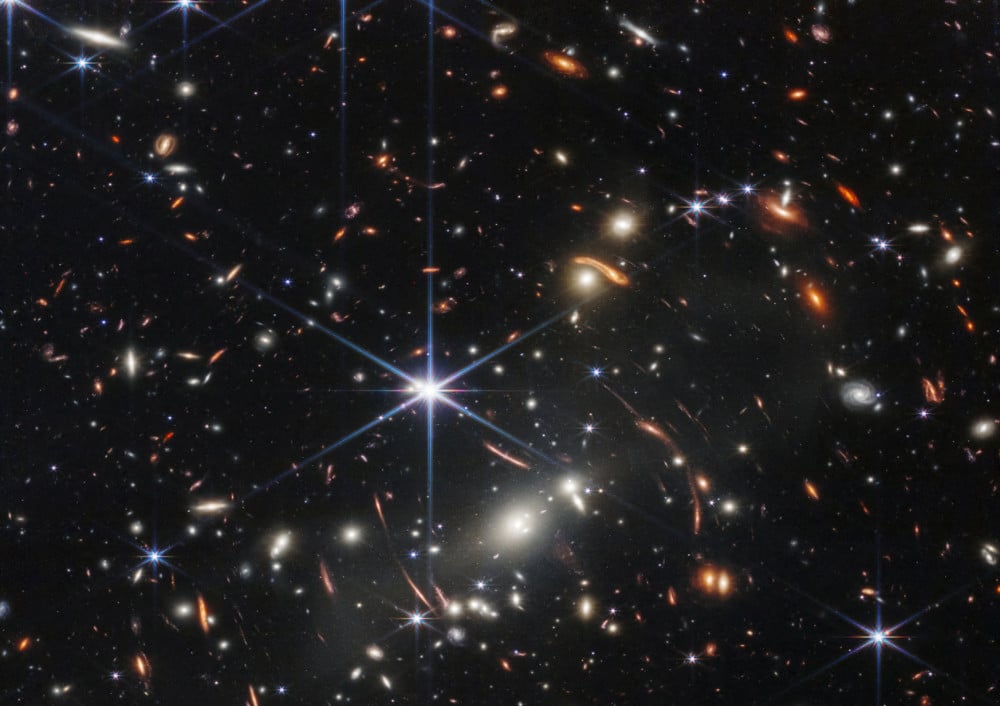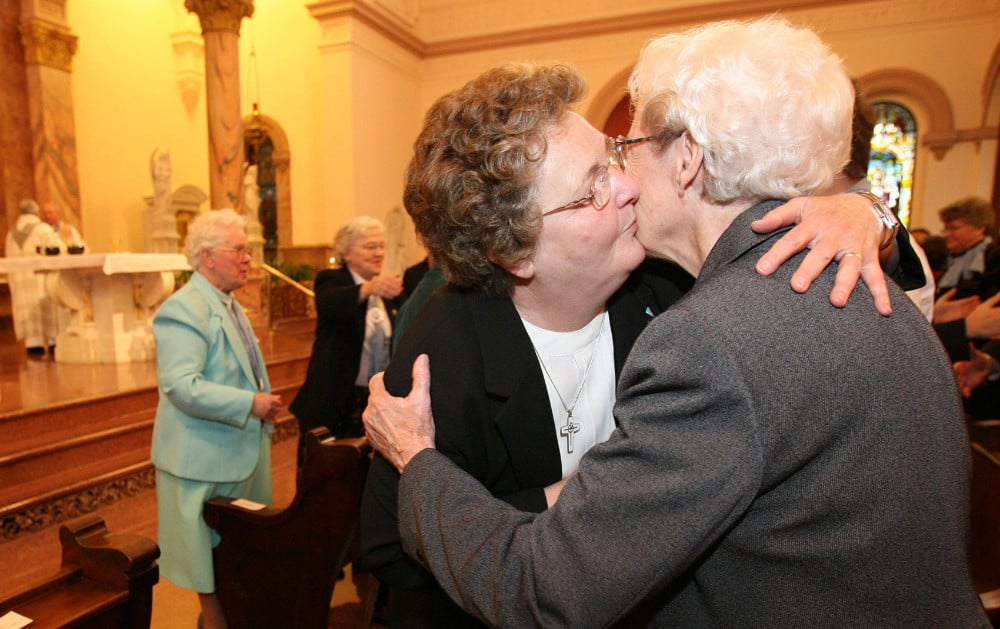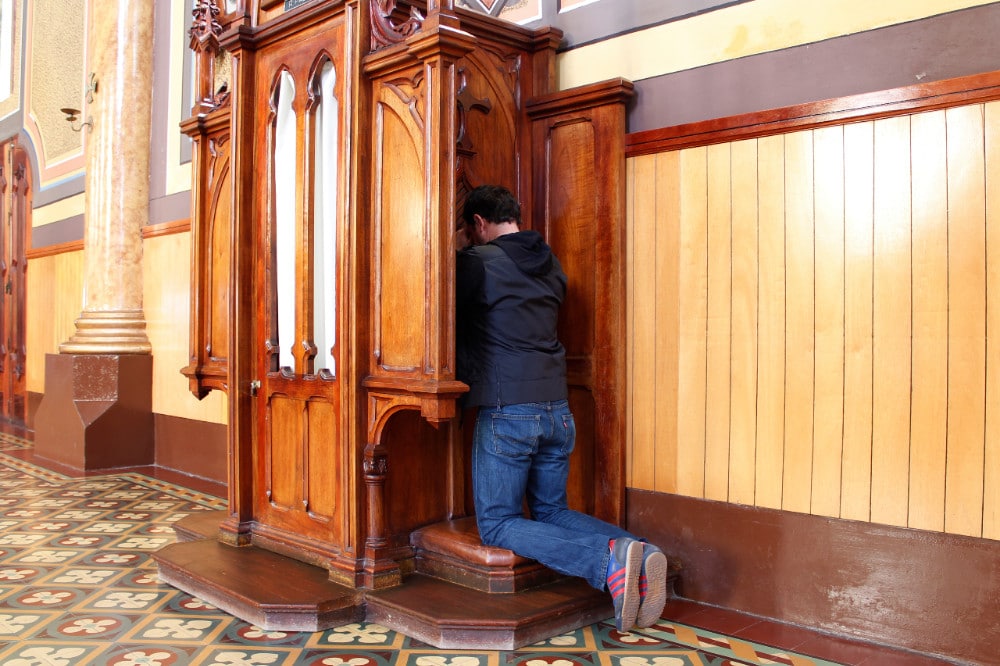The James Webb Space Telescope has transmitted its first data package of infrared analysis of a galactic cluster in the deepest regions of the universe. Some of the galaxies go back 13.1 billion years — only 700,000,000 years after the Big Bang. The most remarkable feature of these data is the variety, complexity and orderliness of the universe at this very early stage.
The image of the galactic cluster SMACS 0723 shows thousands of galaxies at different stages of development, revealing different kinds of star formation and even a galaxy with a mirror image. There is so much information in this infrared image that it will take researchers years to unpack. When they do, it will reveal much about how galaxies form, grow and merge with each other, and why they stop forming stars. One cannot help but be impressed by what appears to be astounding orderliness and elegance amidst the much higher probability of chaos.
Contrary to popular belief, the universe did not evolve haphazardly. In its first few minutes, it moved through a series of highly ordered transitions that were so precisely, mathematically and physically, ordered that it makes multistage rocket propulsion look like child’s play. The major transitions constituted whole new epochs with different kinds of physics — from a quantum gravity epoch to a space-time epoch to an inflationary epoch to an electroweak epoch to a Higgs epoch to a quark-baryon-hadron epoch to a lepton epoch to a nucleosynthesis epoch and ultimately to the epoch of large-scale structures. The first seven of these epochs (up to the lepton epoch) occurred in a few seconds; the eighth epoch happened about two to 20 minutes after the Big Bang, and the final epoch happened about 150,000,000 years after the Big Bang. Can you imagine the preprogramming that would have to be developed to produce a smooth transition through all of these epochs of new physics leading up to the galactic formations spotted by the James Webb Telescope (700,000,000 years after the Big Bang)?
When we gaze upon those early galaxies and stars in their immense variety, complexity and orderliness — amidst the trillions upon trillions upon trillions of alternative disordered possibilities — it is difficult to avoid what the Nobel Prize-winning physicist David Smoot called “the fingerprints of the maker.” As a believer, I feel the wonder of the psalmist, who declared in a prescientific age, “The heavens declare the glory of God; the sky proclaims its builder’s craft” (Ps 19:1).
For centuries, the Catholic Church has been a champion of the natural sciences. No less than 286 priests and clerics have been involved in the development of every branch of the sciences — physics (particularly cosmology and geology), chemistry, biology and applied mathematics. A few of these notable priests and clerics are: Brother Roger Bacon, a Franciscan friar acknowledged to be the father of contemporary scientific method; Nicholas Copernicus, a Catholic cleric who developed the first mathematical heliocentric model of the solar system; Father Gregor Mendel, an Augustinian monk and abbot who is acknowledged to be the founder of modern quantitative genetics; Bishop Nicolas Steno, a Danish Catholic bishop who is acknowledged to be one of the founders of modern stratigraphy and geology; and Msgr. Georges Lemaître, a Belgian diocesan priest with a Ph.D. in physics who is acknowledged to be the founder of contemporary cosmology after discovering the Big Bang Theory in 1927.
It is noteworthy that a Catholic priest discovered the Big Bang Theory, now rigorously established as the framework of contemporary cosmology and universal origins. When he first told his colleague Albert Einstein about it, Einstein resisted it because he did not want to believe in an expanding universe. However, when Edwin Hubble validated the expansion of the galaxies according to the Lemaître-Hubble equation (in 1929), Einstein said (at a conference where he was co-presenting with Lemaître), “This is the most beautiful and satisfactory explanation of creation to which I have ever listened.”
In his encyclical Divino Afflante Spiritu, Pope Pius XII, in 1943, stated that the purpose of the Bible (in which God speaks through inspired authors) is to present sacred truths needed for salvation. In contrast to this, the purpose of science is to give empirical-mathematical descriptions and explanations of the physical universe. Thus, when the Bible talks about creation, its purpose is not to give a correct observationally based explanation of the physical universe but to impart truths that will be needed for salvation — such as there is one God, not many; that everything else in reality besides the one God is the creation of God; that God is just and makes things good; and that human beings are made in the image and likeness of God. If we let sacred Scripture reveal sacred truths necessary for salvation and let science give explanations of the physical universe through its method, there can be no real contradiction between science and the Bible.
The infrared image from the James Webb Telescope reveals an inspiring intersection between the disciplines of Scripture and science within our Catholic faith — that 13.1 billion years ago, we find exactly what we in faith might expect: orderliness and elegance with unbelievable mathematical precision, opening upon an immense beauty unraveling into a most accommodating environment through which the Lord would impart a transphysical soul to creatures made in his very image and likeness. The heavens truly do declare the glory of God.
Father Robert J. Spitzer, SJ, Ph.D., is president of the Magis Center and the Spitzer Center for Visionary Leadership. He is the former president of Gonzaga University.







